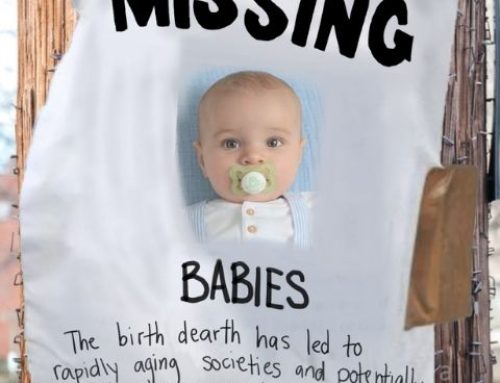 A venerable observation, offered by a range of writers from Samuel Johnson to Pope John Paul II, has it that: “A society will be judged on the basis of how it treats its weakest members.” It is an expression of ancient wisdom, echoing the Greek laws of hospitality for strangers and travelers, as well as the Christian regard for the weak. Christ proclaims in advance the last judgment he will render to those who neglect the needy in St. Matthew’s Gospel: “Depart from me…For I was hungry and you gave me nothing to eat…I was a stranger and you did not invite me in, I needed clothes and you did not clothe me, I was sick and in prison and you did not look after me…I tell you the truth, whatever you did not do for one of the least of these, you did not do for me.” (25:41-45)
A venerable observation, offered by a range of writers from Samuel Johnson to Pope John Paul II, has it that: “A society will be judged on the basis of how it treats its weakest members.” It is an expression of ancient wisdom, echoing the Greek laws of hospitality for strangers and travelers, as well as the Christian regard for the weak. Christ proclaims in advance the last judgment he will render to those who neglect the needy in St. Matthew’s Gospel: “Depart from me…For I was hungry and you gave me nothing to eat…I was a stranger and you did not invite me in, I needed clothes and you did not clothe me, I was sick and in prison and you did not look after me…I tell you the truth, whatever you did not do for one of the least of these, you did not do for me.” (25:41-45)
With these words in mind, it is chastening to consider the fact that a recent review of statistical studies in the U.S. found that the abortion rate for unborn children who have been successfully “screened” for Down’s syndrome may be has high as 85 per cent. The depraved divide between diagnoses and deliveries represented in this statistical summary shows, at a glance, how our society treats the weak: we test our children in the womb, not to prepare for their care, but that so that they can be disposed of before birth. The primary “treatment” we offer children afflicted with Down’s syndrome is prenatal annihilation.

Dr. Jerome Lejeune discovered the connection between Down's syndrome and chromosome 21 but would be horrified at the use of genetic screening to eliminate pre born children because they had the genetic abnormality.
This fatal violence against fetal life – clearly motivated by an arbitrary biological characteristic – would, in any other context, constitute a hate crime. But, whereas hate crimes are isolated outbreaks of ideological violence against random targets, the systematic elimination of unborn children with Down’s syndrome is not so much a hate crime as it is form of covert, prenatal genocide. The list of locations where the gruesome phenomenon of genetic “cleansing” has been perpetrated must, therefore, be expanded to include not only Germany, Rwanda, and Bosnia, but also the womb.
In each of the above incidents of atrocity, language and ideology served as screens under which mass murder was committed: Rwandan Tutsis were referred to by propagandists as “cockroaches” so that they were butchered; the Nazis huddled the victims of their programmatic racial purges into the paradoxical category of “life unworthy of life” – a designation which included Jews, the physically infirm, and those with conditions such as Down’s syndrome.
In our culture, the odious rationalization used to justify the widespread practice of eugenic abortions is the idea of “quality of life:” the perceived “quality” of the lives of the mentally disabled is judged – by others, of course – to be so low, that their very existence must be extinguished. But the notion that life is reducible to its quality is ludicrous: the deep mystery of lived existence is something that even Milton’s fallen angels are reluctant to relinquish, despite being in hell: for “who would lose,/ Though full of pain, this intellectual being,/ Those thoughts that wander through eternity,/ To perish rather, swallowed up and lost/ In the wide womb of uncreated Night?” Yet, in the wombs of their mothers, the disabled are condemned to that night by those who should be their life-long patrons and protectors.
Thus, the final paradox of this perverse perspective is preemptive euthanasia: “quality of life” is now brandished as an argument against life itself. The problem, of course, is that there is no limit to this logic. Switzerland, for instance, has recently approved an incredibly expansive set of “screenings” for the worried parents of in utero children. Meanwhile, U.S. researchers claim that they have discovered a non-invasive way to test for perhaps has many as 3,000 genetic disorders and diseases.
These tests, however, will not just determine what disabilities the unborn child has now, but will also determine the chances that the child may develop a disease in the future. Parents will be presented with abortion as a “therapeutic” remedy if they learn that their son or daughter might develop heart disease in their sixties or Alzheimer’s in their seventies – at ages, that is, more advanced than their parent’s own. It is probably just as likely that the parents have the same odds of developing such afflictions themselves; but only the unborn are targeted for elimination.
When a class of persons is arbitrarily excluded from the continuum of “biological brotherhood” (to borrow Lejeune’s phrase), they do not become less human simply because their dignity is ignored, abused, and fatally violated. On the contrary, it is those who perpetrate these abhorrent exclusions who become inhuman in the process, perverted by both the violence they commit and the reasons they adduce in defense of their actions. Covert violence and the ideological hatred from which it springs have corroded our society: the odious eugenic attitude which motivates the practice of prenatal “screening” has robbed the first world, not only of its children, but of its very humanity. If we are to be judged on how we treat the weak, our sentence will be severe, indeed.




